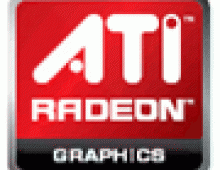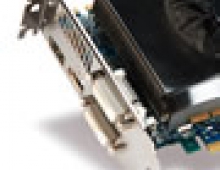
ATI: No Need For HDCP Graphics Cards Yet
After receiving significant critisism from various online resources about the lack of HDCP-ready graphics boards, ATI says that there is no need for such cards, considering that there is no HDCP protected content available, at least for now.
The story began last week, when an enthousiast website Firingsquad.com posted an
article reporting the current state of HDCP support in graphics cards. The
article examined which cards currently shipping, support HDCP and strongly
critisized the fact that ATI and NVidia are currently advertising some of their
cards as being HDCP ready, while they were not.
For all those who are not familiar with the HDCP definition, it is a copy protection standard for digital high definition (HD) content. According to the HDCP specification, HD video content that is streamed through an HDMI or an HDCP-DVI port should be be encrypted to prevent illegal copying. Any attempts to copy the video would result in a downscale to low resolution to deter copying.
But what is the need for HDCP? As is widely known, movie studios plan to use HDCP on Blu-Ray and HD-DVD. Once that is the case, you would need HDCP capable hardware or you won't be able to view these DVDs and of course create an HD backup, as explained above. Creating a backup is another story, for now let's stick to graphics cards.
So in order to watch an HD video, you need a HDCP capable TV (any TV Set with a "HD Ready" logo should by definition be HDCP capable) and a HDCP capable playback device, i.e. a PC or DVD Player (Blu-Ray, HD DVD included).
In the case of a PC, you will need a PC player, an "HD-Ready" monitor as well as an HDCP-ready graphics card.
Canadian ATI has been accused of advertising most of its latest retail cards as "HDCP-ready". For example, ATI's X1900 series was dubbed as "HDCP-ready", while some of the company's professional products listed as "HDCP-compliant".
"Generally, our graphics chips are HDCP ready, but the graphics boards out there are not (yet) HDCP capable" explains Mr Rene Froeleke, ATI's Technical PR Manager for Europe. "In order to make a graphics adapter HDCP capable, it needs the HDCP keys. If a board manufacturer wishes to build a HDCP capable graphics adapter, we can supply them with a secure BIOS ROM which includes these keys and the AIB can then build a HDCP capable graphics adapter. The HDCP capable interface of such a graphics adapter can be either DVI or HDMI," Froeleke explains.
"What we do is that we can supply a BIOS ROM image which has a secure area into which we can put the necessary HDCP keys. The remaining part of this BIOS ROM is then used for all other BIOS information that is required on a graphics adapter."
But what about the consumers who have already spent significant amounts of money for a high-end graphics card? Will they have the chance to upgrade their cards and make them HDCP-ready in the future? Actually no, as Froeleke explains:
"As there are stringent measurements in place in regards to the distribution of HDCP keys, we can not simply flash existing boards with a BIOS that would include these keys."
Sapphire, one of ATI's AIBs, showed a graphics adapter with HDMI interface at CES in Las Vegas in January. However, it is not clear whether the company plans on releasing this board anytime soon.
However, in an interesting turn of events, today ATI seems to silently remove references to HDCP-ready on its consumer products pages.
Commenting on the pricing of the future HDCP-ready graphics cards, Froleke said that the extra cost should not be very high.
"I don't know how much of a price difference we will see between HDCP capable and non-HDCP capable boards. Simply from a hardware perspective, they would be very low (just the extra costs of using a secure ROM and maybe using a HDMI connector instead of a DVI connector)," said Froeleke.
"Most of the extra costs you will see will be a result of the costs for the HDCP keys as well as extra costs in distribution of the product. Lower-volume products with special features will usually cost more in the distribution as they will ship in lower quantities, Distributors won't want to keep them in stock, System Integrators and Resellers will only order them at request but once ordered they need them urgently so they will be shipped express and by air etc. These costs should not be underestimated and can not be predicted accurately, as they will adjust to the market demand," said Froeleke.
For a manufacturer that wishes to use HDCP technology on its products, a fee paid to the HDMI committee is required. Upon a signed agreement, the manufacturer must pay the committee an annual fee of $15,000 and a royalty fee of $0.15 per product sold. If HDCP protection is implemented, then the fee is reduced to $0.04 per product.
ATI's spokesman also said that currently, consumers do not need an HDCP-ready graphics board, since there is no HDCP protected video available.
"As you can imagine, it is hard to estimate when exactly the market will require HDCP capable boards and if customers can see the benefit already, " said Froeleke. "I am not aware of any HDCP protected content out there. And as long as this kind of content is not there, customers will usually not pay a premium for a product that offers a feature they don't need yet."
For all those who are not familiar with the HDCP definition, it is a copy protection standard for digital high definition (HD) content. According to the HDCP specification, HD video content that is streamed through an HDMI or an HDCP-DVI port should be be encrypted to prevent illegal copying. Any attempts to copy the video would result in a downscale to low resolution to deter copying.
But what is the need for HDCP? As is widely known, movie studios plan to use HDCP on Blu-Ray and HD-DVD. Once that is the case, you would need HDCP capable hardware or you won't be able to view these DVDs and of course create an HD backup, as explained above. Creating a backup is another story, for now let's stick to graphics cards.
So in order to watch an HD video, you need a HDCP capable TV (any TV Set with a "HD Ready" logo should by definition be HDCP capable) and a HDCP capable playback device, i.e. a PC or DVD Player (Blu-Ray, HD DVD included).
In the case of a PC, you will need a PC player, an "HD-Ready" monitor as well as an HDCP-ready graphics card.
Canadian ATI has been accused of advertising most of its latest retail cards as "HDCP-ready". For example, ATI's X1900 series was dubbed as "HDCP-ready", while some of the company's professional products listed as "HDCP-compliant".
"Generally, our graphics chips are HDCP ready, but the graphics boards out there are not (yet) HDCP capable" explains Mr Rene Froeleke, ATI's Technical PR Manager for Europe. "In order to make a graphics adapter HDCP capable, it needs the HDCP keys. If a board manufacturer wishes to build a HDCP capable graphics adapter, we can supply them with a secure BIOS ROM which includes these keys and the AIB can then build a HDCP capable graphics adapter. The HDCP capable interface of such a graphics adapter can be either DVI or HDMI," Froeleke explains.
"What we do is that we can supply a BIOS ROM image which has a secure area into which we can put the necessary HDCP keys. The remaining part of this BIOS ROM is then used for all other BIOS information that is required on a graphics adapter."
But what about the consumers who have already spent significant amounts of money for a high-end graphics card? Will they have the chance to upgrade their cards and make them HDCP-ready in the future? Actually no, as Froeleke explains:
"As there are stringent measurements in place in regards to the distribution of HDCP keys, we can not simply flash existing boards with a BIOS that would include these keys."
Sapphire, one of ATI's AIBs, showed a graphics adapter with HDMI interface at CES in Las Vegas in January. However, it is not clear whether the company plans on releasing this board anytime soon.
However, in an interesting turn of events, today ATI seems to silently remove references to HDCP-ready on its consumer products pages.
Commenting on the pricing of the future HDCP-ready graphics cards, Froleke said that the extra cost should not be very high.
"I don't know how much of a price difference we will see between HDCP capable and non-HDCP capable boards. Simply from a hardware perspective, they would be very low (just the extra costs of using a secure ROM and maybe using a HDMI connector instead of a DVI connector)," said Froeleke.
"Most of the extra costs you will see will be a result of the costs for the HDCP keys as well as extra costs in distribution of the product. Lower-volume products with special features will usually cost more in the distribution as they will ship in lower quantities, Distributors won't want to keep them in stock, System Integrators and Resellers will only order them at request but once ordered they need them urgently so they will be shipped express and by air etc. These costs should not be underestimated and can not be predicted accurately, as they will adjust to the market demand," said Froeleke.
For a manufacturer that wishes to use HDCP technology on its products, a fee paid to the HDMI committee is required. Upon a signed agreement, the manufacturer must pay the committee an annual fee of $15,000 and a royalty fee of $0.15 per product sold. If HDCP protection is implemented, then the fee is reduced to $0.04 per product.
ATI's spokesman also said that currently, consumers do not need an HDCP-ready graphics board, since there is no HDCP protected video available.
"As you can imagine, it is hard to estimate when exactly the market will require HDCP capable boards and if customers can see the benefit already, " said Froeleke. "I am not aware of any HDCP protected content out there. And as long as this kind of content is not there, customers will usually not pay a premium for a product that offers a feature they don't need yet."


















